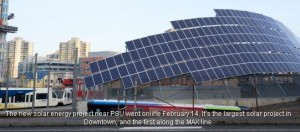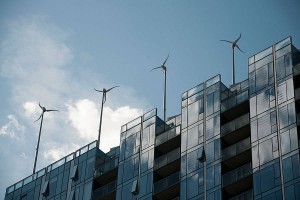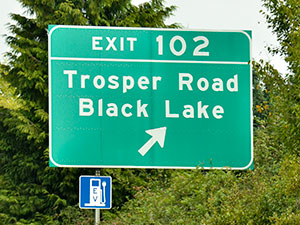I just returned from a road trip through the Pacific Northwest, including Oregon (Cascades, Willamette Valley and Portland) and Washington (Seattle and the San Juan Islands). So of course I’m now an expert on the environmental trends there, as seen from the window of my car and my conversations with friends and strangers there. Based on this purely anecdotal evidence, I’ve compiled my list of top five environmental trends in the Pacific Northwest.
5) Farm-to-Fork: Lots of great agriculture in the Northwest, and they take advantage of it. Much of the food we ate on our trip, whether purchased at farmers markets, restaurants, or eaten at friends’ houses, came from hyper-local sources. At one cafe in the San Juan islands, all food was either grown at the farm on-site or traded/purchased from other local farms, including a nearby brewery.
4) Rail Transit: Portland and Seattle are undergoing a light rail construction boom. Seattle just recently began theirs, and we saw new tracks going in near the downtown, while Portland’s MAX system is extending south of the city. Plus Portland has a cool-looking (although I gather cost-ineffective) gondola tram linking two parts of their hospital complex that are separated by a hill.
3) Renewable Energy: Particularly in Oregon, we saw some innovative renewable energy arrays. Portland State University features the first solar “arch” that I’ve seen (photo right),
while another building in downtown had cool-looking wind turbines up top (photo left).
Bonus points for its energy efficient ventilation system through windows that can open to the street (remarkably unusual in most skyscrapers).
2) Infill Development: Portland and Seattle featured cranes galore on multistory apartment buildings near their downtowns. Seattle’s trendy Eastlake neighborhood and Portland’s Pearl District stood out to me for construction in these transit-friendly neighborhoods. One negative: Seattle’s Safeco Field baseball park has failed to stimulate much development in the otherwise industrial area south of downtown. I can only assume it’s a failure of planning and financing, but maybe it’s just not a great area for homes and businesses given the industrial activities going on.
1) Electric Vehicles: while California is still the leader here, Oregon features great signage for EV charging stations along the highway (see photo on the right).
Washington State also seemed to have a good presence of EVs on the road. We even saw a Tesla Model S on Orcas Island in the San Juans (an hour ferry ride from the mainland) with California plates! If that car wasn’t shipped there, then that’s a real coup for Tesla’s supercharger network along I-5.
Overall, it’s great to see other West Coast states making such progress on environmental and energy needs. One area of improvement: Washington State should definitely improve its tailpipe regulations — cars and trucks there are quite smelly and polluting. And of course we need both states to join California’s cap-and-trade market. But I’m confident that in the long run, the West Coast will help lead the country in smart policies to clean the environment and build a sustainable economy.
Leave a Reply
You must be logged in to post a comment.





